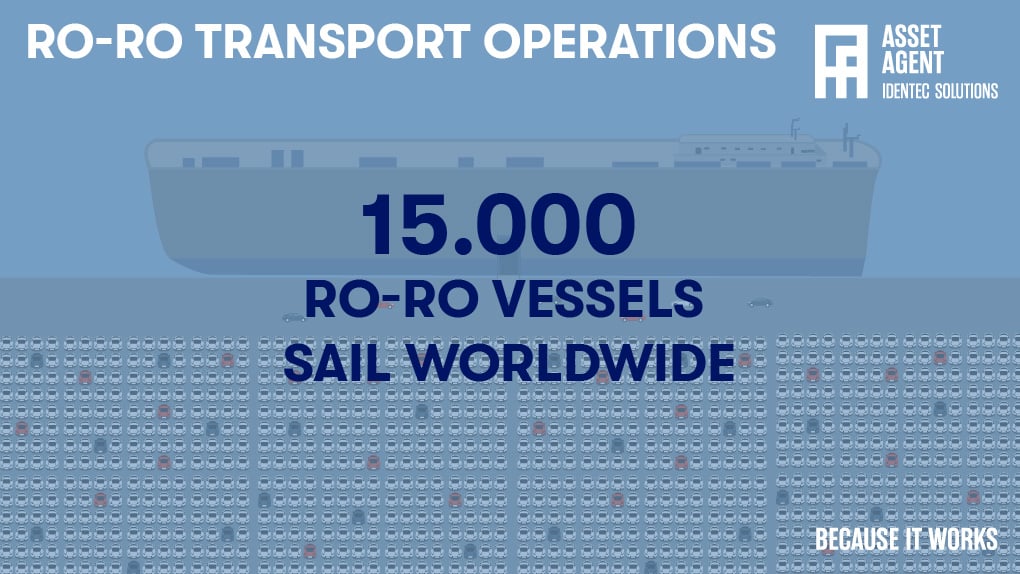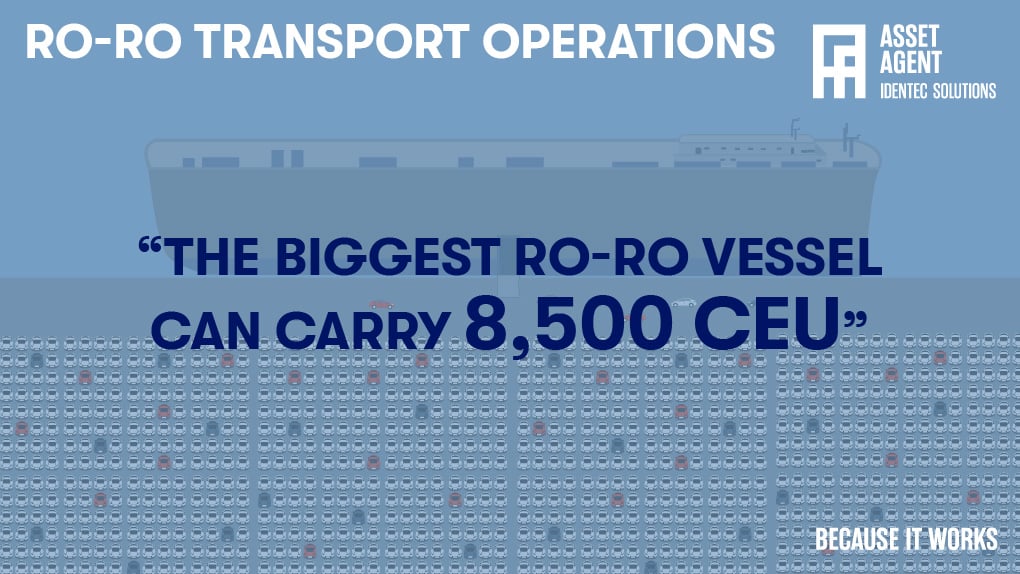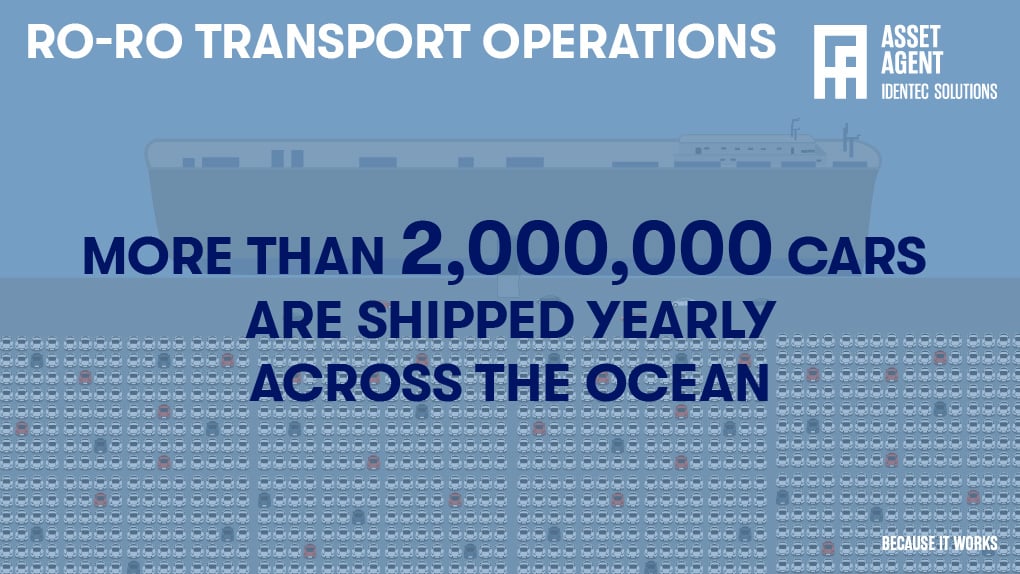RoRo Transport: Perform Efficient Operations
| Written by Mark Buzinkay
RoRo vessels, uniquely designed to carry wheeled cargo, play a pivotal role in global logistics, efficiently connecting vehicle production centres with markets across seas. This article examines the complexities of RoRo operations, from the nuances of vessel design to the intricacies of loading processes and the challenges of standardisation in the industry. With a focus on both operational efficiency and safety, we shed light on the critical yet often overlooked aspects of this vital transportation method.

No video selected
Select a video type in the sidebar.
Table of contents:
- The RoRo Essentials First
- RoRo Transport: The Workhorse of the Sea
- RoRo Transport: Vessel Loading Operations
- RoRo Transport: Yard Loading Operations
- How Can You Improve RoRo Transport Operations?
- Takeaway
- Glossary
The RORO Essentials First
In the world of logistics, there are several ways to transport cargo, not only with containers. One of those ways, specific to maritime transport, is by RoRo vessels. RoRo or ro-ro refers to the expression "roll-on/roll-off" and describes a vessel transporting wheeled cargo - such as cars, trucks, buses, trailers or even industrial vehicles. We can distinguish between car and vehicle carriers depending on their transport cargo. Car carriers transport cars exclusively and are called Pure Car Carriers (PCC). Vehicle carriers load trucks and cars; hence, their correct name is 'Pure car/truck carrier' (PCTC).
These vessels are equipped with unique features that allow cargo to be efficiently rolled onto and off the carrier. Therefore, PCCs and PCTCs are purpose-built, featuring large open decks with sturdy ramps at the ship's front, side and rear (fore-down, aft-down and slewing ramps). These ramps can be adjusted to different heights, driving vehicles directly onto or off the ship. Once on board, the vehicles are securely parked and fastened to the deck to prevent dangerous movement during transit.
Big car carriers offer space for several thousand vehicles and use several decks to maximise cargo capacity and security. One of the most critical aspects of loading a PCC/PCTC is calculating a proper cargo balance to guarantee ship stability: you need to know where you want to park which vehicles.

RORO Transport: The Workhorse of the Sea
RoRo transport vessels can be considered the true workhorse of the sea. Millions of cars and other vehicles are shipped across the oceans and along big rivers, using vessels capable of transporting up to 8,500 car equivalent units (CEU) with plans for a future vessel capacity of 9,100 CEUs (Aurora class).
Approximately 15,000 RoRo vessels are estimated to operate today in the world, transporting more than 2 million vehicles per year. In Europe alone, 23 different RoRo shipping service providers run 620 unique routes connecting 148 ports.
The popularity of using RoRo vessels is no accident. RoRo shipping offers several key advantages that have made it a preferred choice for transporting vehicles:
- Efficiency: Loading and unloading processes are significantly faster and more streamlined than container shipping. This reduces port waiting times and enables quicker deliveries.
- Cost-effectiveness: RoRo shipping can be more cost-effective for large, heavy cargo or vehicles since it eliminates the need for specialised lifting equipment and container handling.
- Versatility: RoRo vessels can carry a wide range of cargo, from small cars to oversized machinery, making them suitable for diverse industries.
- Reduced Risk of Damage: With proper securing and stowage, RoRo shipping minimises the risk of cargo damage during transit compared to other shipping methods.
Efficiency and cost-effectiveness depend on the PCC/PCTC vessel and, more importantly, the loading/offloading operations.
RORO Transport: Vessel Loading Operations
When a shipping company informs the agent and terminal of a vessel's expected arrival, the agent must notify the Port Authority for port entry approval. Access depends on meeting specific requirements, with the port assessing the vessel's liability and standards through pre-arrival documentation. This includes the Master's General Declaration, security forms, health declarations, and ship certificates.
After informing the Port Authority, the next step is planning the operational aspects in coordination with the terminal and shipping company. Key considerations include assigning a berth (usually starboard for car carriers due to ramp locations), scheduling berthing time, and estimating operation duration. Berthing time depends on factors like arrival at the anchorage, berth availability, pilotage, weather conditions, and the presence of priority vessels.
The cargo operations' duration and the vessel's departure time hinge on the number of vehicles to be loaded and the terminal stevedores' work rates. The agent arranges to hire stevedoring gangs for the expected operations. Once the berth is confirmed and the gangs are arranged, the focus shifts to the stowage plan. This plan, prioritising time and economic efficiency, safety, and vessel stability, is a schematic elevation view of the decks with cargo marked in different colours for each port of loading/discharge.
The stowage plan influences the loading order, usually done circularly around the ramp for efficient discharge. The loading direction depends on the vehicle's steering wheel side. Deck height is also crucial, as it determines which vehicles fit, maintaining a safety margin set by the shipping company's standards.
Before operations commence, the shipping agent ensures the vessel's readiness and the terminal's arrangement of stevedoring gangs per operational needs. During operations, the agent verifies compliance with the shipping company and carriers' Technical Quality Standards, which cover driving speed, safety, lashing, vehicle spacing, and attire.

RORO Transport: Yard Loading Operations
Ro-Ro port terminals are crucial logistics infrastructures for handling car carriers' loading operations. These terminals connect vehicle production centres to their transport means for sale destinations. The smooth flow of vehicles in and out of the terminal is vital, necessitating optimal road, rail, and sea access.
Road access includes car carrier trucks for longer shipments or direct driving for shorter routes. Notable examples like Volkswagen in Bremerhaven and Nissan in Zeebrugge use adjacent logistic centres for temporary vehicle storage before transferring them to the terminal. This approach frees terminal storage and gives manufacturers better stock control.
Rail transport, linking distant production centres to ports, offers cost efficiency and safety. Sea transport involves transshipments from other vessels, where vehicles from transcontinental factories are first discharged at hub terminals like Barcelona or Antwerp and then redistributed to nearby ports.
These cargo movements necessitate continuous entry and exit from customs territories, influencing customs regulations.
Loading operations at the terminal are facilitated for carrier-delivered vehicles onto shipping company vessels. However, actual loading isn't done by terminal staff but by externally hired stevedore gangs of lashers, drivers, and team leaders. These gangs operate in shifts, with extra costs for night, early morning, weekends, and holidays.
Preparations for loading involve positioning vehicles near the vessel according to the stowage plan and segregating them by brand, model, and destination. Stevedores then drive and lash the vehicles in the vessel's holds. For efficiency, terminals select berths closest to designated vehicles to minimise movement.
The loading master, the terminal's key representative during operations, ensures stowage plan adherence, supervises stevedore activities, maintains loading rates, and guarantees a safe work environment.
How Can you Improve RoRo Transport Operations?
There is a notable lack of standardisation in the maritime transportation of vehicles compared to other industrial and logistics sectors. This business generates a significant amount of wealth, which warrants further consideration and improvement. The lack of standardisation often leads to inefficiencies, errors, and compromises in safety, prompting the important question, "How can this be improved?"
One area of how to improve the process of RoRo transport operations is how to plan the car carrier stowage, how to make sure that the correct vehicles are loaded at the right place in the vessel, and how to perform these operations in an efficient way. One exciting way to do so is to use the VIN (vehicle identification number), a handheld device to scan the VIN and register the vehicle's position, and a software application that controls the loading process by syncing the progress with the stowage plan.
In this scenario, the stevedore/driver scanning the VIN gets the parking slot at the vessel on the device's screen and scans the VIN again once he delivers the car to the defined spot. The head of the stevedore gang also scans the VIN once the car is leashed to finalise the loading process. This enables the captain of the vessel to see the progress of loading and also to understand the proper weight balance on his vessel. It is also clear to the system which vehicle has been taken from the parking lot in which order by which driver, leading to better transparency in terms of damage control, performance and theft.
The same procedure can be applied when unloading a car carrier. Additionally, the new parking lot for unloaded cars can be recorded by scanning the VIN at arrival in the yard. As many car importers use their RoRo port terminal as an extensive garage, every single step in the finishing process, like tire change, adding custom parts, cleaning, fueling, and more, can be recorded by scanning the VIN with the mobile device that supports a software application like Asset Agent.
An alternative solution to this scenario involves a mobile transponder that transmits an individual identification. This Radio Identification can be received by readers placed on strategic points of the entire operation to virtually see every single move from every vehicle involved automatically and in real-time. No manual interaction, such as scanning the VIN, is needed with this solution.

TAKEAWAY
In addressing the inefficiencies in RoRo transport operations, the article highlights innovative solutions centred on technological integration and process optimization. A key advancement is the use of vehicle identification numbers (VIN) through handheld devices, allowing for precise tracking and placement of vehicles within the vessel, ensuring efficient stowage and balance. This method not only streamlines the loading process but also enhances transparency and damage control. An alternative approach involves using mobile transponders and strategic reader placements to automatically track every vehicle movement in real-time, eliminating the need for manual input. These solutions signify a shift towards more automated, accurate, and efficient RoRo cargo operations, promising significant improvements in safety, operational transparency, and overall performance of maritime vehicle transportation.
Glossary
Standardisation is the process of developing and implementing technical standards to ensure consistency, compatibility, and quality across products, services, and processes. It enhances efficiency, safety, and interoperability, while reducing costs and complexity. Standardisation supports global trade and innovation by providing common frameworks and guidelines. It is applied across various industries, from manufacturing to information technology. (2)
Reference:
(1) https://www.ecgassociation.eu/
(2) David, P. A., & Greenstein, S. (1990). The economics of compatibility standards: An introduction to recent research. Economics of Innovation and New Technology, 1(1-2), 3–41.
Note: This article was updated on the 10th of September 2025. This article was partly created with the assistance of artificial intelligence to support drafting.

Author
Mark Buzinkay, Head of Marketing
Mark Buzinkay holds a PhD in Virtual Anthropology, a Master in Business Administration (Telecommunications Mgmt), a Master of Science in Information Management and a Master of Arts in History, Sociology and Philosophy. Mark spent most of his professional career developing and creating business ideas - from a marketing, organisational and process point of view. He is fascinated by the digital transformation of industries, especially manufacturing and logistics. Mark writes mainly about Industry 4.0, maritime logistics, process and change management, innovations onshore and offshore, and the digital transformation in general.
Related Articles
Related Product



